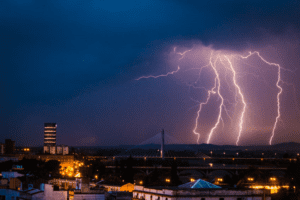Any power outage is inconvenient and some can result in revenue losses, in terms of lost sales or merchandise damage, facility owners often choose to take precautions to help minimize such potential problems. However, there are no options when it comes to electrical systems that could impact occupant safety, as back-up power requirements spelled out in a range of codes and standards make clear. As with many code-related issues, though, engineers need to think beyond specific NEC or NFPA provisions and consider the actual risks a facility might face to ensure emergency systems perform as intended when they’re really needed.
This is a lesson facility managers at New York City’s Bellevue Hospital learned during the flooding that accompanied Hurricane Sandy in 2012. Though the hospital’s emergency generators were safely located on the building’s 13th floor, the fuel pumps feeding them were located in the basement. When the pumps failed, hundreds of patients had to be evacuated. All systems were installed to code, but system designers hadn’t considered the full range of emergencies those systems might face.
The 2013 edition, Annex A, of the National Fire Protection Association’s NFPA 110, Standard for Emergency and Standby Power Systems, addresses this specific issue with a note that emergency power supply system equipment be located above known previous flood elevations, where possible. But with severe weather occurring more frequently, previous records may easily be broken, so planners need to consider new worst-case scenarios in their emergency-power designs. For those international jurisdictions following the International Electrotechnical Commission’s IEC 60364, Electrical Installation of Buildings, similar requirements can be found in that standard’s section 60364-7-710.
Similarly, electrical pros working on new construction projects need to consider how emergency systems such as lighting might perform once a now-empty building is furnished. For example, NFPA 101: Life Safety Code and the International Code Council’s International Building Code spell out illumination requirements for emergency lighting, with illumination levels measured in foot candles at the floor level. However, walk-throughs with a local code authority could easily be completed while the building is empty. System designers also need to think about what those illuminations will actually be, once file cabinets, cubicles and other potential obstructions are moved into place.
Finally, in determining what circuits to connect to uninterruptible power systems or other backup supplies, it could be important to think beyond code requirements and consider what additional equipment should be protected in case an outage extends beyond a few hours. For example, hospitals still depend heavily on fax machines to transfer and receive prescriptions and other documents, and protecting a modem and router could enable building occupants to access the Internet with their smartphones, even if computers weren’t working.
You can learn more about power reliability in hospitals in the Schneider Electric white paper “Improving Patient Safety Through Power Availability and Reliability.” Or visit our site to learn about our HealthPower Infrastructure Program.


